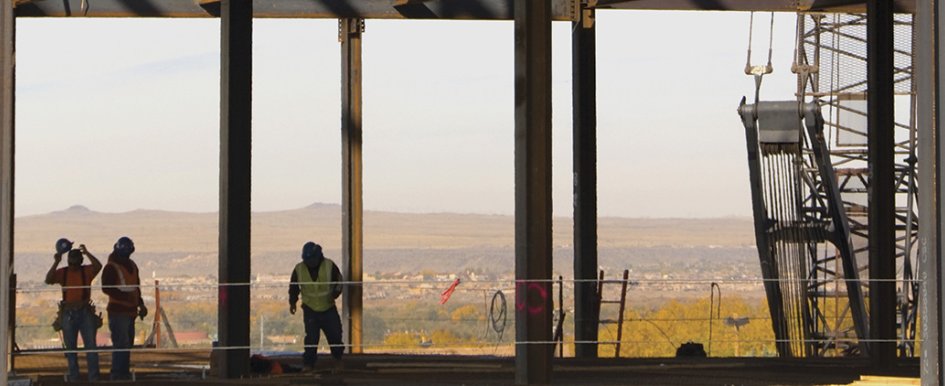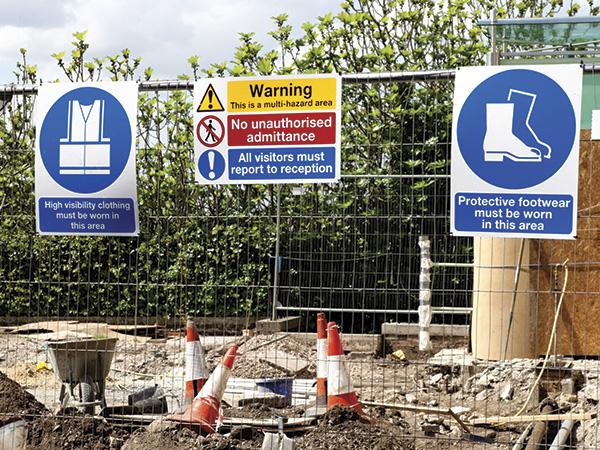
For years, safety and risk managers have been searching for a magic elixir in their quest to answer the construction industry’s age-old riddle: What can we do to keep our workers’ compensation costs down while still keeping safety awareness high and workers engaged?
For some employers, incorporating an incentive-based safety program has been an important contributor in the reduction of claim incidents and, ultimately, workers’ compensation insurance costs. While it is not a foolproof solution, these programs can help boost employee morale, promote safety awareness and help reduce workers’ compensation injuries.
“Safety is paramount,” according to Bill Wooditch, CEO of the Wooditch Company, a commercial brokerage in Irvine, California, that specializes in construction. “When leadership invests in safety and by investment, they turn a cost center into a profit center. But, the employer has to know what works for his employees and teams. The company has to make the incentive one that is valuable to employees. The culture must enforce the edict. When the edict becomes ‘the way,’ you create a culture of safety.”
These incentives can range from material rewards like cash, gift cards, raffle drawings and company apparel, to more creative approaches, such as awarding employees with additional time off like extra vacation time—a low-cost alternative that has gained traction as many construction companies have fought to dig their way out of the recession.
Program Structure
Most companies that employ an incentive-based program host an informal recognition ceremony quarterly or biannually. It usually involves a brief speech by management and a catered lunch.
The two most common approaches for incentive-based programs are individual and team-based. Individual incentives usually consist of rewarding an individual for a designated period of work time with no injury. This information is easy to track and anyone who is injury-free can share in the reward.
The team-based concept holds a group of workers accountable for a designated timeframe. This can run for the length of a single project, or simply a set time period with no injuries. Cash incentives tend to be more common in this setting.
There are several reasons to roll out an incentive program, and there is never a wrong time to get started, said property and casualty producer Rob Welbourn. The 12-year insurance veteran encourages his clients to incorporate an incentive program as a way of company life.
“Today’s companies have to be safety oriented, especially for contractors, as project owners are requiring more information about the safety program, EMR and OSHA logs prior to jobs being awarded,” Welbourn said.
Emphasizing safety every day, at every jobsite, from the president of the company on down, is the only way to make sure safety is etched into everyone’s mind. An incentive program takes that one step further by recognizing and rewarding efforts.
Benefits
Avoiding injury due to carelessness can mean the difference between earning a portion of your wages while sitting on the couch at home in pain, or working your regular hours with the rest of the team without nagging injury. The real benefit of an effective safety program is found in the direct impact it can have on the employee’s health. Remaining injury-free contributes to the quality and longevity of a person’s career, as well as benefitting the team culture present on the jobsite.
Workers want to see their employers making every effort to protect them and their work environment. By investing in an incentive program, the employer gets to reap the financial rewards experienced through reduced workers’ compensation premiums—typically the biggest driver of insurance costs. The reduced claim frequency, loss of work days and shrinking experience modifiers can lead to long-term insurance savings, which position the employer with a competitive advantage in bidding for jobs.
Another important benefit is the increased safety awareness among employees. When workers are incentivized, they are more vigilant, will point out possible hazards and will be more inclined to help stamp out potentially questionable or fraudulent claims, particularly in a team-based incentive where a false filing can jeopardize the incentives for other employees. This encourages company-wide accountability in team members.

Detractors
Detractors point to the cost of the program and an inability to experience an actual return on the investment as reasons to avoid incentive-based programs. Injuries are still going to happen, and it can be difficult to quantify whether incentives could have actually helped avoid them.
Some detractors believe pounding a safety message simply doesn’t resonate, while employees dismiss the company swag and fail to look past the free lunch. Even more concerning is the perception that an incentive programs can keep employees from reporting legitimate injuries.
This is particularly impactful when incentives are largely based on a team or crew’s performance. Someone with a minor injury may be more inclined to work through the pain, keep it to themselves or treat with their personal care physician. The fear of ridicule may be counterproductive to the underlying message that all claims should be reported immediately.
Proponents agree that an incentive program is not an end-all solution. Employers should still augment their incentive program with a proactive communication plan, a return-to-work program and fresh tailgate topics and trainings. Furthermore, proponents insist that every injury should be reported and followed by a thorough investigation to find the source of the problem so it can be prevented in the future. One thing is clear, though; safety is a necessary component to sustain long-term viability in this industry. After all, the best claim is one that never happens.
